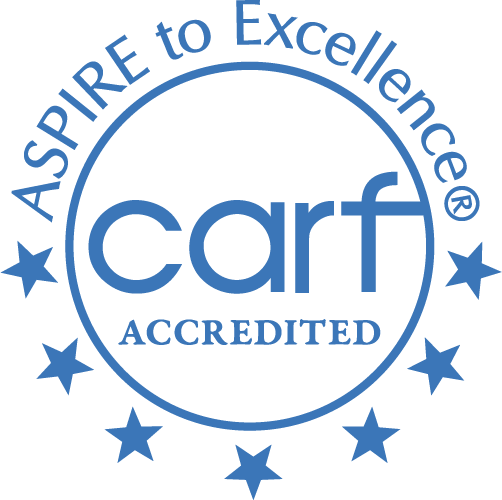
9401 Crystal Creek Road
Lucerne Valley, CA. 92356
760-248-9199
Lucerne Valley, CA has nearby choices for addiction treatment including: 2 medicaid programs, 2 inpatient rehab centers, 2 drug rehabs that take private insurance like Cigna, 1 drug detox, 3 outpatient treatment programs.

For help finding an addiction treatment center, Call us!
All calls are 100% confidential and free
1-877-882-9275



Pine Ridge Treatment Center is 25.2 miles from Lucerne Valley, California


High Desert Child Adolescent and is 25.7 miles from Lucerne Valley, CA
High Desert Child Adolescent and has been providing ongoing addiction care and rehabilitation services to people who live in the Lucerne Valley, California area. Today, High Desert Child Adolescent and offers services like relapse prevention, 12-step facilitation approach, anger management, substance abuse counseling approach, vocational rehabilitation services, couple/family therapy and others in line with its belief of following rehab treatments that work best to help people achieve recovery.
This addiction treatment center also thinks that the way to get the best result for the client is to offer individual care. Services are available in the following settings - long term addiction treatment centers, inpatient rehab facilities, short term drug and alcohol rehab centers, inpatient detox centers, intensive outpatient treatment and others.
High Desert Child Adolescent and also offers aftercare programs to ensure that its clients achieve positive outcomes both in the short and in the long term. Lastly, High Desert Child Adolescent and accepts private insurance, private pay, sliding fee scale, medicare, medicaid, access to recovery (atr) voucher, state welfare or child and family services funds and others as forms of payment.


County of San Bernardino is 26.7 miles from Lucerne Valley, California
County of San Bernardino has been offering ongoing recovery care and rehabilitation services to the residents of Lucerne Valley and those living within the surrounding communities. Today, County of San Bernardino provides services like relapse prevention, 12-step facilitation approach, anger management, substance abuse counseling approach, vocational rehabilitation services, couple/family therapy and others in keeping with its philosophy of following rehab treatments that work best to help clients achieve sobriety.
This alcohol and drug rehabilitation program also believes that individual care for each client is the best way to provide them with the best form of treatment. Services are available in the following settings - long term drug and alcohol rehab centers, inpatient treatment programs, short term drug and alcohol rehab centers, detox programs, outpatient day treatment and others.
It also believes that an aftercare program is integral in promoting recovery in the long term. Lastly, County of San Bernardino accepts private health insurance, cash or self-payment, sliding fee scale, medicare, medicaid, access to recovery (atr) voucher, state welfare or child and family services funds and others as forms of payment.
In the mental health field, drug addiction is commonly referred to as a "Substance Use Disorder" (SUD). This term is used in the Diagnostic and Statistical Manual of Mental Disorders, Fifth Edition (DSM-5), which is the standard classification of mental disorders used by mental health professionals in the United States.
A Substance Use Disorder is defined as a pattern of behaviors characterized by an inability to control or cut down on use, spending a lot of time obtaining the substance, craving the substance, failing to fulfill obligations at work, school, or home due to substance use, and continuing to use the substance despite knowing it's causing physical or psychological harm.
Substance Use Disorders can be further categorized based on the specific substance involved, such as Alcohol Use Disorder, Opioid Use Disorder, Cannabis Use Disorder, and so forth. The severity of the disorder is also assessed (mild, moderate, or severe) based on the number of diagnostic criteria met by an individual.
It's worth noting that this terminology emphasizes the understanding of drug addiction as a medical disorder, rather than a moral failing or a matter of willpower. This shift in language is part of a larger effort to reduce stigma and promote a more compassionate, effective approach to treatment.
Substance abuse significantly increases the risk of suicide, particularly among vulnerable populations such as LGBTQ+ (lesbian, gay, bisexual, transgender, queer, and others) youth. This heightened risk stems from a combination of factors associated with both substance abuse and the unique challenges faced by LGBTQ+ youth. Here's a closer look at these factors:
Mental Health Disorders: Substance abuse often co-occurs with mental health disorders such as depression, anxiety, and bipolar disorder, which are known risk factors for suicide. LGBTQ+ youth experience these mental health conditions at higher rates than their heterosexual and cisgender peers, partially due to the minority stress they face.
Minority Stress: Minority stress refers to the chronic stress experienced by marginalized groups, including LGBTQ+ individuals. It can include experiences such as discrimination, stigma, bullying, and family rejection, which can increase feelings of hopelessness and contribute to both substance use and suicidal ideation.
Substance Use and Suicidal Behavior: Substance use can lead to increased impulsivity, decreased inhibition, and intensified feelings of despair, making a person more likely to attempt suicide. It can also exacerbate feelings of isolation and hopelessness, further increasing the risk.
Social Isolation: Many LGBTQ+ youth feel socially isolated, either because they are not out to their peers or because they face rejection after coming out. This isolation can lead to increased substance use and a higher risk of suicide.
Family Rejection: Family rejection related to an individual's sexual orientation or gender identity can lead to increased substance use and heightened suicide risk. LGBTQ+ youth who do not receive support from their families are particularly vulnerable.
Lack of Access to Mental Health Services: Many LGBTQ+ youth struggle to access mental health and substance use treatment services, which can help manage risk factors for suicide. Barriers to access can include lack of insurance, stigma, and a shortage of providers who offer LGBTQ+-inclusive care.
Intersectionality: LGBTQ+ youth who belong to other marginalized groups (e.g., racial/ethnic minorities) often face additional layers of discrimination and stress, which can further increase their risk of substance abuse and suicide.
Efforts to prevent suicide among LGBTQ+ youth include providing access to culturally competent mental health and substance use treatment, fostering supportive environments in schools and communities, and advocating for policies that protect LGBTQ+ youth from discrimination and harassment. It's also crucial to provide support for families of LGBTQ+ youth, as family acceptance has been shown to protect against suicide risk.
"Repairing relationships damaged by substance abuse is a process that takes time, effort, and a sincere commitment to change. Here are some steps to consider:
Achieve Sobriety: The first step in repairing relationships is to focus on your recovery. Demonstrating commitment to sobriety shows your loved ones that you are serious about making a change.
Acknowledge the Damage: Be open and honest about the harm your substance abuse has caused to your relationships. Acknowledging the problem is the first step towards making amends.
Apologize Sincerely: Offer a sincere and heartfelt apology. It's essential to take responsibility for your actions and the pain they've caused, without making excuses.
Make Amends: Making amends goes beyond apologizing. It involves taking action to correct past wrongs where possible, whether that means repaying debts, resolving past disputes, or simply making a commitment to behave differently in the future.
Open Communication: Maintain open, honest, and regular communication with your loved ones. Be open to their feelings and feedback, even if it's tough to hear.
Be Patient: Healing takes time. Your loved ones may not be ready to immediately forgive or trust you again. Respect their feelings and give them the time they need to heal.
Seek Professional Help: Family or relationship therapy can provide a safe and structured environment to address issues, improve communication, and begin the process of rebuilding trust.
Maintain Consistency: One of the most crucial steps in repairing relationships is consistently demonstrating your commitment to your recovery and to positive change. This consistency helps to rebuild trust over time.
Support Their Healing: Understand that your addiction may have caused significant pain and trauma to your loved ones. Support them in their own process of healing, which may include their own therapy or participation in support groups.
Rebuild Trust: Broken trust is often the most challenging aspect of a relationship to mend. Proving through actions over time that you're committed to your sobriety and to being reliable and truthful can gradually rebuild trust.
National Non Profit Helpline - 1-877-882-9275
Our National Non Profit Helpline is a 24/7, 365-day-a-year treatment referral and information service for individuals and families faced with mental and/or substance use disorders.
All calls are strictly confidential
Our service provides referrals to licensed treatment facilities, support groups, and community-based organizations. You don't have to struggle alone with addiction. Help is just a phone call away. Call 1-877-882-9275 now to get the help you need and deserve.
© Copyright 1998 - 2022 All Rights Reserved. Content is protected under copyright laws, do not use content without written permission.